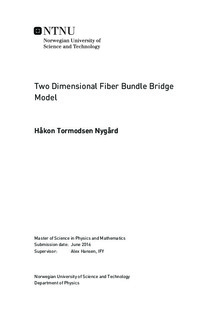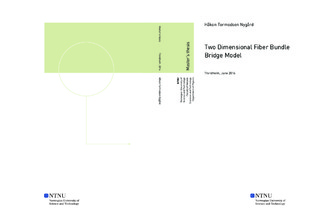| dc.description.abstract | The two dimensional fiber bundle bridge model is introduced, derived and studied for an uniform threshold distribution. The model is independent of history and has an adjustable effective range of interaction, which is adjusted by the effective spring constant $\beta$. For high values of $\beta$ the systems are soft and for low values the systems are stiff.
In the limit of stiff systems the model is shown to be equivalent to the equal load sharing model, which is supported by the results for the strain curve, average size of largest cluster $S_{\MAX}$, average number of clusters $N_d$, average distance between two consecutively breaking fibers $\langle\Delta r^2\rangle^{1/2}$ and burst size distribution $D(\Delta)$. The model is not equivalent to the local load sharing model for soft systems, the behaviour is closer to the behaviour of the soft clamp model for soft systems. For soft systems a circularly shaped cluster of broken fibers develops for both models when sufficiently many fibers are broken. After the cluster has formed, the fibers breaking are close to or in its perimeter, expanding the size of the circular cluster. The bridge model represents a very thin bendable plate with holes, while the soft clamp model represents an infinitely thick elastic plate. It is therefore expected to be some differences between the models, but the amount of comparable data at the time of writing is unfortunately insufficient to pinpoint clear differences. | |

